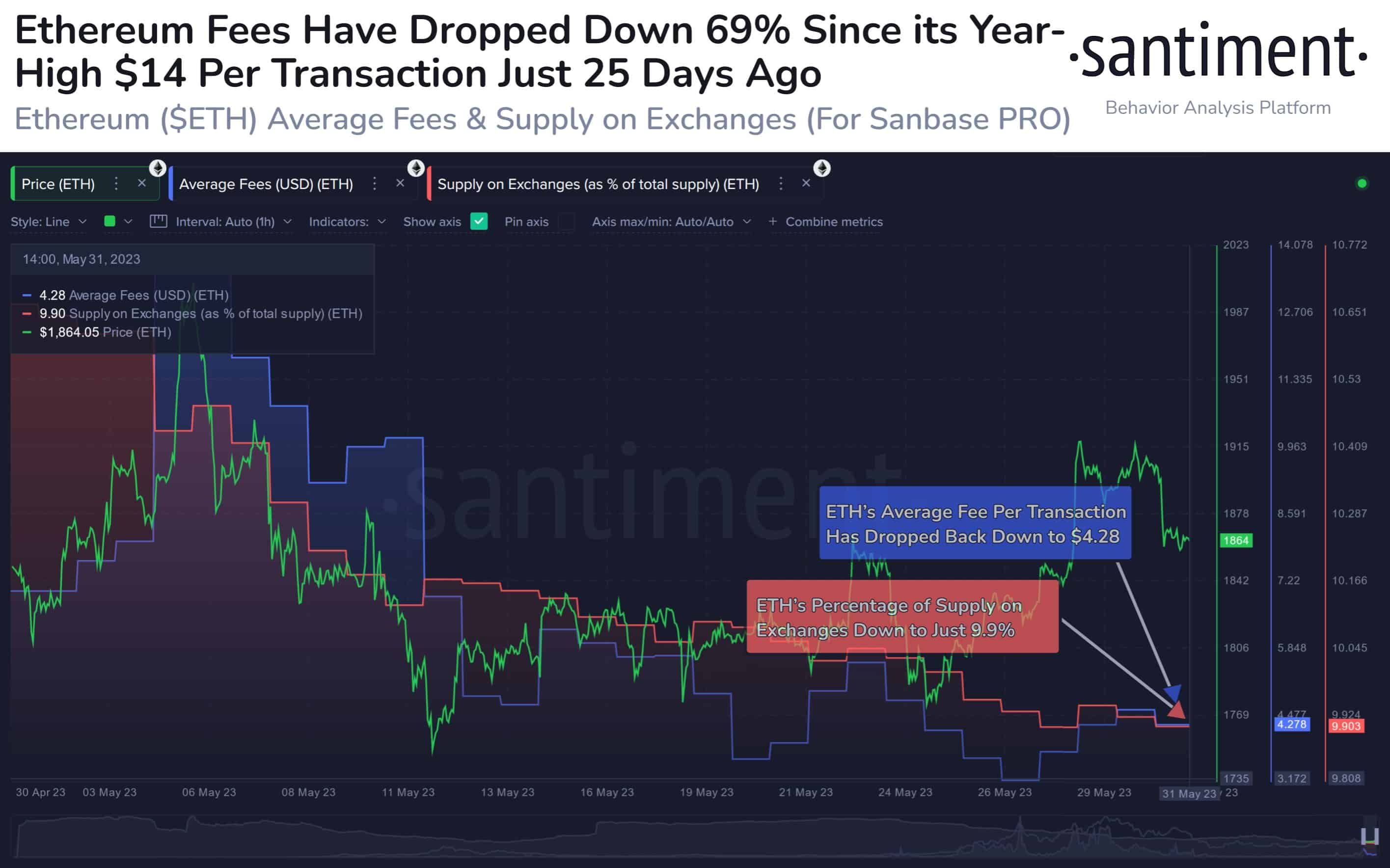Ethereum Average Gas Fee Dropped 69% Over Last Month, Will ETH Surge?

The world’s second-largest cryptocurrency Ethereum (ETH) ended the last month of May 2023 on a pretty flattish note and is currently trading around $1,850 levels. However, the last month witnessed some important changes in terms of the drop in the transaction gas fee.
As per on-chain data provider Santiment, Ethereum’s (ETH) gas fee dropped by nearly 70% within just a month’s time. Interestingly, in early May last month, the Ethereum gas fee touched its 2023 high of $14. However, by the end of the month, it dropped all the way to under $5. In its report, Santiment notes:
Ethereum’s average fees have come back down to earth after its 2023-high $14 per $ETH transaction in early May. More affordability encourages more utility. Additionally, #crypto‘s #2 asset is at an #alltimelow 9.9% on exchanges as #selfcustody reigns.

Ethereum Gas Usage By Transaction Types
Since the Ethereum blockchain has been host to several asset classes for a very long time, each of them has contributed to gas price surges at different points in time.
On-chain crypto analysts platform Glassnode explains how different asset classes were leading contributors to Ethereum gas prices at different times. Back in 2017-2018, ICOs were at their peak contributing 40% of the gas on Ethereum and attributed to all the ERC-20 token transfers.
However, as the demand for the ERC-20 tokens started to decline in the later years, decentralized finance (DeFi) rose to prominence in 2020. The DeFi wave reached its peak in June 2020 to 2021, contributing a 30% gas fee. Glassnode highlights the consistent underperformance in the DeFi tokens over the last two years adding “investments into DeFi have been complex, recording remarkably poor token price performance over the recent years”.
Later since mid-2021, non-fungible tokens (NFTs) gained major prominence while the demand was subdued by the end of 2022. Similarly, the USD-pegged stablecoins have experienced a surge in user demand since 2020. Glassnode explains: “The decrease in gas usage from stablecoin transactions reflects a shift in their change in utility more than a decrease in demand. Stablecoins are now used less as a payment method but more for hedging and as a store of value”.

- December Recovery Ahead? Coinbase Outlines Why Crypto Market May Rebound
- Peter Brandt Hints at Further Downside for Bitcoin After Brief Rebound
- $1.3T BPCE To Roll Out Bitcoin, Ethereum and Solana Trading For Clients
- Why is the LUNC Price Up 70% Despite the Crypto Market’s Decline?
- CoinShares Fires Back at Arthur Hayes, Dismisses Fears Over Tether Solvency
- Ethereum Price Holds $3,000 as Bitmine Scoops Up $199M in ETH; What Next?
- Solana Price Outlook Strengthens as Spot ETFs See $15.68M in Fresh Inflows
- Dogecoin Price Gears Up for a $0.20 Breakout as Inverse H&S Takes Shape
- Bitcoin Price Forecast as BlackRock Sends $125M in BTC to Coinbase — Is a Crash Inevitable?
- XRP Price Prediction As Spot ETF Inflows Near $1 Billion: What’s Next?
- Solana Price Outlook: Reversal at Key Support Could Lead to $150 Target

















